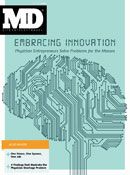Physician Entrepreneurs Solve Problems for the Masses
Innovative physicians find they can scale-up their impact by branching out as entrepreneurs.
The Merriam-Webster online dictionary defines an entrepreneur as “a person who starts a business and is willing to risk loss in order to make money.”
That’s not inaccurate. But that standard definition focuses on finances and omits key phrases like “being innovative” or “solving a problem,” both of which are clearly present when physicians embark upon the entrepreneurial trail.
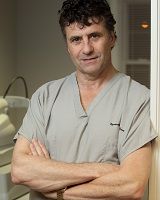
“You see a need, and you’re not happy with the current standard of care,” explains James Rynerson, MD (right), board certified ophthalmologist, and president and CEO of BlephEx, LLC, a company he started to market the medical device he created to treat blepharitis. “As doctors we’re not just treating patients. We want to know what we can do better.”
And that goes far beyond making money.
No Status Quo
Rynerson recalls finishing his residency and, like many of his young colleagues, being ready to set the world on fire.
“We’re all these young, eager doctors ready to get out there and stomp out disease,” he says.
Instead, he started practicing medicine, began seeing patients, and noticed a fairly large number of patients with the same, chronic complaints: itchy, scratchy eyes, or sandy or grainy feeling in the eyes. Rynerson thought he knew exactly what the problem was. He would fix the problem, and the patient would be fine.
“And so we do what we learn to do in residency,” he recalls. “We send patients home to do home lid scrubs consisting of diluted Johnson’s Baby Shampoo. And then we see them back in six months, or a year, or 2 years, or 5 years later, and nothing ever changes in these patients. And you realize once you get in private practice that [the current treatment] just doesn’t work.”
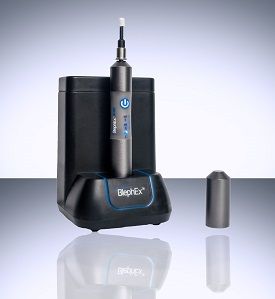
Perhaps more disconcerting
is that, frustrated with their inability to resolve the condition, physicians started to ignore the disease. Which in turn frustrates patients.
“That never sat well with me, this sort of benign neglect of the disease,” Rynerson says. “I thought there has to be a better way.”
So about 3 years ago he hunkered down in his garage, began tinkering around, and eventually put together a prototype for what today is the BlephEx device that is being used nationally not only for blepharitis treatment in people, but in dogs as well.
“Patients were loving it,” Rynerson says. “For the first time they were free of symptoms, beginning to make their own tears again. It just made a world of a difference, and I thought that this is something we need to bring to market; that we need to bring to eye doctors around the world, so they can deliver to their patients the same success that I was having with my patients.”
Rynerson says seeing his patients relieved of the dry eye problems they’d been plagued by was an incredibly rewarding feeling. But the first rewarding feeling, he says, is getting in the first shipment of the finished device, taking it out of the box, and knowing it’s exactly as he envisioned it.
“That’s a great, uplifting moment,” he recalls. “Not only from the perspective of an entrepreneurial inventor, but from the perspective of being a physician.”
Building a Knowledge Base
Kingsley Chin, MD, recalls that while in college he had no formal plan for a career in medicine.
“I was just looking for opportunities to build my knowledge base,” he says. “To understand what opportunities existed. I was looking; I was searching. I was completely open.”

That openness, while seemingly unfocused, positioned Chin (right)to become the entrepreneur, investor, surgeon, and inventor that he is today. And it was the overall journey that was key.
It started with a focus on engineering and mathematics at Columbia University, then transitioned into business and management consulting, a stint at Cigna Insurance, and then a career on Wall Street at Goldman Sachs where he developed information technology solutions. He was “in the middle of where business happens affecting the entire world,” and yet something was missing.
“It just hit me that I’m a nobody,” Chin recalls. “And I thought, if it’s going to take me 10 years to be a partner, I could do medicine and I’m guaranteed to have a job. And I’m going to be my own guy.”
Today he’s more than that. In addition to becoming one of the leading spine surgeons in the country, Chin founded KIC Ventures in 2005 with the intent to invest in companies aimed at disrupting and revolutionizing the health care industry. Soon thereafter he founded and sold his first portfolio company, MANTIS, Inc., to Stryker, and has since seen KIC Ventures’ companies generate more than $100 million.
And he’s not slowing down.
“The most overwhelming feeling for me is the sense of urgency,” Chin explains. “Someone might think, ‘This guy has it made. Now he’s going to chill out.’ But actually, the more you take on, the more it becomes a positive reinforcement. It’s like, if I think it I can do it. And then you start doing it.”
His soon-to-be-released book, “Prove Yourself: Lessons From My Journey Building Successful Businesses,” is just one more way for Kingsley to share his passion for success.
“I truly believe that we have the solution for the health care crisis,” he says. “And so I have that urgency to get to that point where I can actually do it.”
Pillow with a Purpose
It’s a pretty safe bet that virtually everyone has woken up from a night of sleep to find little wrinkles creasing their face. Those are sleep wrinkles. They may disappear as you move through your morning, but over time the repetition and loss of elasticity will create a permanent wrinkle.
In other words, it will distort your face—unless you change the way you sleep.
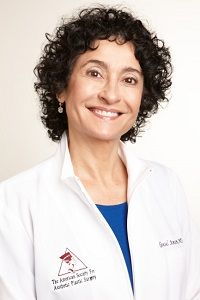
That was the focus that led Goesel Anson, MD, (left) board certified by the American Board of Plastic Surgery and the American Board of Surgery, to create JuveRest: The Sleep Wrinkle Pillow.
“I don’t know that I ever thought of it as wanting to be [an entrepreneur],” Anson says. “I certainly didn’t set out to start a separate business. I’d say that plastic surgeons, in general, tend to be entrepreneurial. And I think that's partly because of the way we have to practice medicine. Patients choose us. They’re often referred by other patients, and other doctors as well, but they don’t have to come see us. And the bottom line was I didn’t have anything to offer my patients (to alleviate sleep wrinkles). There wasn’t anything on the market that worked.”
But it didn’t come easy. The first challenge, Anson explains, was helping people understand that sleep wrinkles do exist; that they’re not hype. And more importantly, that something can be done about them.
“It seemed very logical to me,” she recalls. “But you have to educate people. Because the pillow sounds weird and looks weird. If you saw it in the store you’d walk right by. It doesn’t look very comfortable, and it doesn't look like something you would sleep on. But it’s surprisingly comfortable, and it makes a lot of sense once you understand it.”
Anson is still working to help people understand the nature of sleep wrinkles and the benefits of JuveRest, and acknowledges that while she and her colleagues have made great strides in the past year, there’s still a long way to go.
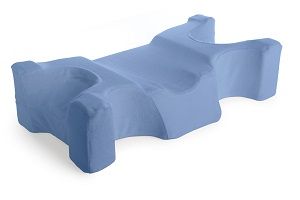
JuveRest pillow
“I tend to forget that it’s only a little over a year since we launched,” she says. “It really hasn’t been that long. It just seems long because I’ve been working on it. But I think the idea that people want to do something proactive that’s not invasive is something everyone can relate to.”
A Common Language
Remember back in the day when PCs and Macs spoke a completely different language (and sometimes still do)? That created a lot of frustration for users of desktop computers.
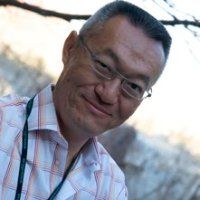
Today the frustration is more centered on the standardizing of data from electronic health record systems—in particular, of late, data from wearable sensor devices. That trend, the wearing of devices like Fitbit trackers and the like, has taken off. But if data collected by these devices is not standardized, if the wearers of these devices are unable to manage, query and share their activity data as they choose, are people’s lives getting any healthier?
Enter Richard Hu, MD, founder and CEO of Vivametrica, an open source analytics platform for wearable devices that standardizes data so it can be used as a valid and reliable tool for health care applications.
“Our goal really is not so much to control the market; control of the ingestion of information and aggregation of that information,” Hu (right) explains. “Our goal is to make this as functional as possible for the end user and for potential customers.”
Hu, a practicing spinal and orthopedic surgeon, as well as a clinical professor of surgery at the University of Calgary, is not a newcomer to entrepreneurship. Some of his earlier forays into different aspects of electronic health records did not come to fruition. But the lessons learned from those ventures were invaluable.
“Finding people who share your vision and passion, and have skills that are complimentary, is a critical piece to making something successful,” Hu says. “We built a strong spinal surgery group at the university. Each of those individuals is someone you can depend on. The parallels from medicine into business are actually very strong. And feeling reassured that you’ve made good decisions in the medical realm helps you in the business realm.”
What Hu and his colleagues have done is create algorithms and standardized methods that allow individuals to compare, for example, their Fitbit to the gold standard activity and monitor the data. For example, the Fitbit information an individual would enter today could be compared in 2 years with data entered in any number of other devices. Then, the number of steps an individual walked 2 years ago may be very important to assess how well they were back then and be able to progress from that point forward.
“More importantly you can compare, for instance, to your wife or your family member who may have a different type of device, and you can compare your health status,” Hu says. “And then you can also compare the risk of disease. That’s one of the algorithms, the group of algorithms, that we find to be most interesting.”
Challenges and Rewards
Just as becoming a physician is fraught with the challenges of years of medical school and training, becoming a successful entrepreneur has its own share of hurdles. The first challenge, Rynerson recalls, is moving the prototype to the mass manufacturing stage—no small task.
“You try to find a company that will work with you and help you keep costs down as you develop the prototype into an actual working model.” For Rynerson, that meant deciding between 5 or 6 different companies. “You can just select the first one that seems eager to climb on board. You have to do your due diligence. And you have to be a strong negotiator right up front where costs are concerned. Otherwise, you’re going to have a difficult time going to market.”
But the rewards, says Hu, are considerable. He points to his practice of more than 25 years and his enjoyment in caring for patients.
“I had a person come to me yesterday and say I changed his life for the better,” Hu recalls. “That’s rewarding.”
But the opportunities to experience rewards of that nature are limited. He explains that even if he operated on 2 patients per day, each working day of the year, he might impact 400 patients. That’s good, he says, but it’s not scalable.
“What I really find intriguing is the ability to find some of these opportunities that you can scale here and provide value for patients, their families, and for my colleagues that is over and above what you can do on an individual, case by case basis,” Hu says. “What if we could change the world this way? I think that’s one of the big rewards. That’s probably the impetus.”
